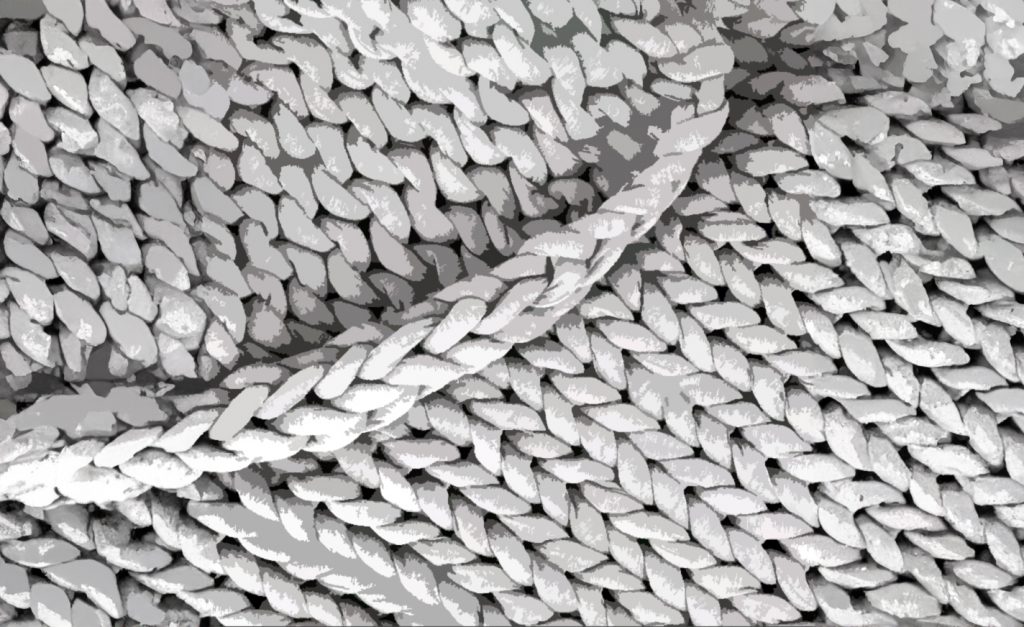Sorry, it doesn’t go in your normal laundry load.
Weighted blankets are the ultimate cozy-weather comfort. Besides providing warmth, their added weight imparts a gentle, hug-like sensation on the user. While there’s minimal evidence to suggest that weighted blankets can potentially help reduce anxiety, these layers are simply soothing to cuddle up with any time.
However, you may be curious about how to wash a weighted blanket, since they’re usually larger and heavier than regular throw blankets. It’s always important to follow your weighted blanket’s care label, which will indicate the best way to clean it, based on its material and filling. Your weighted blanket may be filled with plastic or glass beads, sand, or other materials, so if you wash it incorrectly, you may be at risk of ruining it.
We asked the experts exactly how to wash a weighted blanket, no matter which kind you have, so you can make sure your favorite comfy layer stays clean and pristine.
How to Wash Weighted Blankets in the Washing Machine
Before you throw your weighted blanket (or removable cover) in the washing machine, make sure to adjust the settings first.
“Beyond following the care label for optimal care, typically, weighted blankets should be washed in cold water, using a delicate or perm press cycle,” says James Joun, cofounder and COO of the laundry and dry-cleaning service, Rinse. “For most residential washing machines, you’ll likely want to dedicate an exclusive load to the blanket to allow for it to move about during the wash and spin cycles.”
Washing your blanket on a delicate cycle is particularly important. On a normal wash setting, your machine is set to the fastest spin cycle, which Joun notes might result in fabric warping, given the amount of water the blanket can absorb and the g-forces that occur during the spin cycle.
In addition, adjusting your washing temperature helps with maintaining the blanket’s original vibrancy.
Washing your blanket on a delicate cycle is particularly important. On a normal wash setting, your machine is set to the fastest spin cycle, which Joun notes might result in fabric warping, given the amount of water the blanket can absorb and the g-forces that occur during the spin cycle.
In addition, adjusting your washing temperature helps with maintaining the blanket’s original vibrancy. It’s recommended you wash with cold water to avoid color bleeding (and fading).
How to Dry a Weighted Blanket
After you’ve washed your weighted blanket on the proper machine setting, it’s equally important to dry it correctly.
“You will most likely want to dry the blanket on low heat or per the recommendation of the care label,” says Joun. He notes that doing this helps prevent damage to the fabric fibers.
“It’s unlikely that the care label will recommend hang-drying because the weight of the wet blanket will stretch and deform the material. Instead, dry using low heat — and be prepared to dry more than once.”
How to Wash Spot-Clean-Only Weighted Blankets
You’ll want to treat spot-clean-only weighted blankets a little more delicately than those that are machine-washable. If your blanket gets stained, first dab the spot with a damp towel.
“Then apply a non-bleach gentle stain remover, non-bleach cleaning agent, or soap and warm water,” says Callum Couser, R&D Operations Manager for Lysol. “Massage the stain with your fingers, a soft-bristled toothbrush, or sponge and rinse thoroughly.”
Another option for spot-clean-only weighted blankets is to send them to the dry cleaner. Typically spot-clean should be reserved for dry cleaners who can use various stain removers to target a specific stain. You can help your dry cleaner by specifying the stain type (e.g. oil-based, food).






